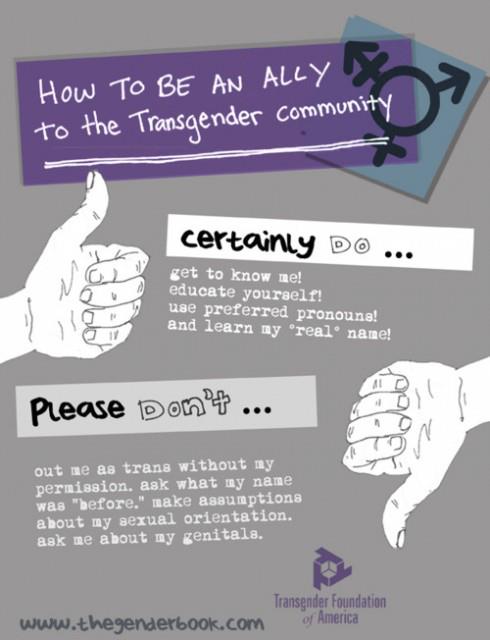Transphobia destroys people’s lives. Transphobia is toxic. Transphobia is bad for our health, and transphobia kills.
Transgender Day of Remembrance is held annually on November 20th. Trans people and allies gather together to commemorate, celebrate, and honour trans people who are no longer with us. On Transgender Day of Remembrance we remember those who have lost their lives to transphobic violence and mistreatment, and simply for being themselves.
It is important that we also acknowledge and raise awareness to the ongoing oppression that countless trans people continue to face on a daily basis. Trans people face extreme health inequities and are often denied employment, healthcare, and social services.
Transphobia is also a major contributing factor to youth homelessness.
Discrimination against transgender youth on the streets and in the shelter system is rampant: transgender youth face higher rates of discrimination than any other youth group (Quintana et al., 2010). Trans and gender non-conforming youth are often denied access to shelters based on their gender identity. Regardless of the shelter standards and policies, shelter workers struggle most with issues regarding access to services for trans people. Agencies serving people experiencing homelessness are not fully equipped or prepared to deal with issues of transphobia. Factors such as institutional transphobia, violence, and discrimination make it difficult for transgender people to access support services, resulting in a situation where trans people often feel safer on the streets than in shelters.
Not only is the shelter system not made accessible to trans people, but also the attitudes and beliefs that govern the system are based on the assumptions that people’s lived gender identity will match the sex assigned to them at birth (e.g. that someone born female will identify as a woman; that someone born male will identify as a man). Most shelters are segregated by birth sex, which increases the risk for gender discrimination and gender violence to occur within shelters. The expectation that youth will fit into the gender binary makes the shelter system an especially difficult place for trans and gender non-conforming individuals.
There is a fundamental lack of acknowledgment of trans youths’ existence in the shelter system — part of the reason for this is due to institutional erasure (Namaste, 2000), which means that the institution erases trans people by not including them in key forms, programs, reports, and statistics. For example, during the intake process, when forms only provide the option for people to identify as “male” or “female”, any identity that does not fall into those two fixed categories are not included and if they are not included, then they are seen to not exist, and if they are seen to not exist, then they do not need services.
The principles that guide the delivery of shelter services in the City of Toronto state that shelters must work towards improving access to trans people and that: “Gender identity is self-defined. Sometimes this may not correspond with a person’s physical appearance. Service providers need to accept gender identity as defined by the individual rather than by the perception of staff and/or other residents” (Toronto Shelter Standards, 2002, p. 7). However, there are major discrepancies between what the rules state, how the rules are followed and not-followed, and the actual experiences that trans youth have in shelters.
Teal’s Story provides a glimpse into the reality of one young trans woman’s experience of what it was like for her to navigate daily occurrences of transphobia in Toronto’s shelter system.
Trans people experiencing homelessness have distinctive needs that are currently unmet in Toronto’s shelter system. In fact, there are NO specialized housing programs for trans people in CANADA. On Transgender Day of Remembrance, may we acknowledge and raise awareness to this harsh reality, so that we may see an end to transphobia.
Please light a candle in honour of those who are no longer with us, as well as for those who are struggling to find a safe bed and hot meal.
On Transgender Day of Remembrance, may we also take time to acknowledge all the wonderful members of the trans community that make this world a better place.

References:
Namaste, V. (2000). Invisible lives: The erasure of transsexual and transgendered people. University of Chicago Press.
Quintana, N.S., Rosenthal, J., & Krehely J. (2010). On the streets. Retrieved from http://tinyurl.com/2fscp6z
Toronto Shelter Standards. (2010). Retrieved from http://www.toronto.ca/housing/pdf/shelter_standards.pdf.
